Around 1947, Ben Pon, a Dutch importer of Volkswagen cars, sketched a preliminary design for a new type of vehicle. The sketch showed something that looked like a shoebox crossed with a caterpillar, sitting squarely on four wheels with an engine in the back. Pon came up with the idea after seeing a Plattenwagen, or “flat-car,” in use at the Volkswagen factory during a 1947 visit. The Plattenwagen, which looked much like a pickup truck in reverse, itself could not be sold, as it was somewhat out of the realm of current safety standards. So, Pon presented his sketch to British Army Major Ivan Hirst, who lead the Volkswagen factory at the time, as a plan for a new Volkswagen-based commercial vehicle. This vehicle which would become known as the “Type 2,” and later the Microbus. It would, however, take a winding road from Pon’s sketch to its first production model.

At first in 1947, Pon’s idea for the Volkswagen-based cargo-hauler was rejected, for at the time, the Volkswagen factory lacked sufficient resources to introduce a new model. By 1948, however, the factory’s situation had improved, and Pon’s plan found a favorable reception with Heinz Nordhoff, the new director of the Volkswagen factory. Nordhoff set the staff at Volkswagen to begin work on the “Type 29,” as it was known internally, and by 1949 testing of the first prototype began. With some reworking, the vehicle was ready for release by November 12, 1949. It was to be called the “Type 2,” as it was Volkswagen’s second official car model, the first being the Type 1, also known as the “Beetle.”

In 1950, the Transporter’s first year of production, Volkswagen produced 1,141 units. The model quickly grew in popularity and by 1959, nearly 29,184 Transporters were flying off the company’s assembly line at its factory in Wolfsburg, Germany.
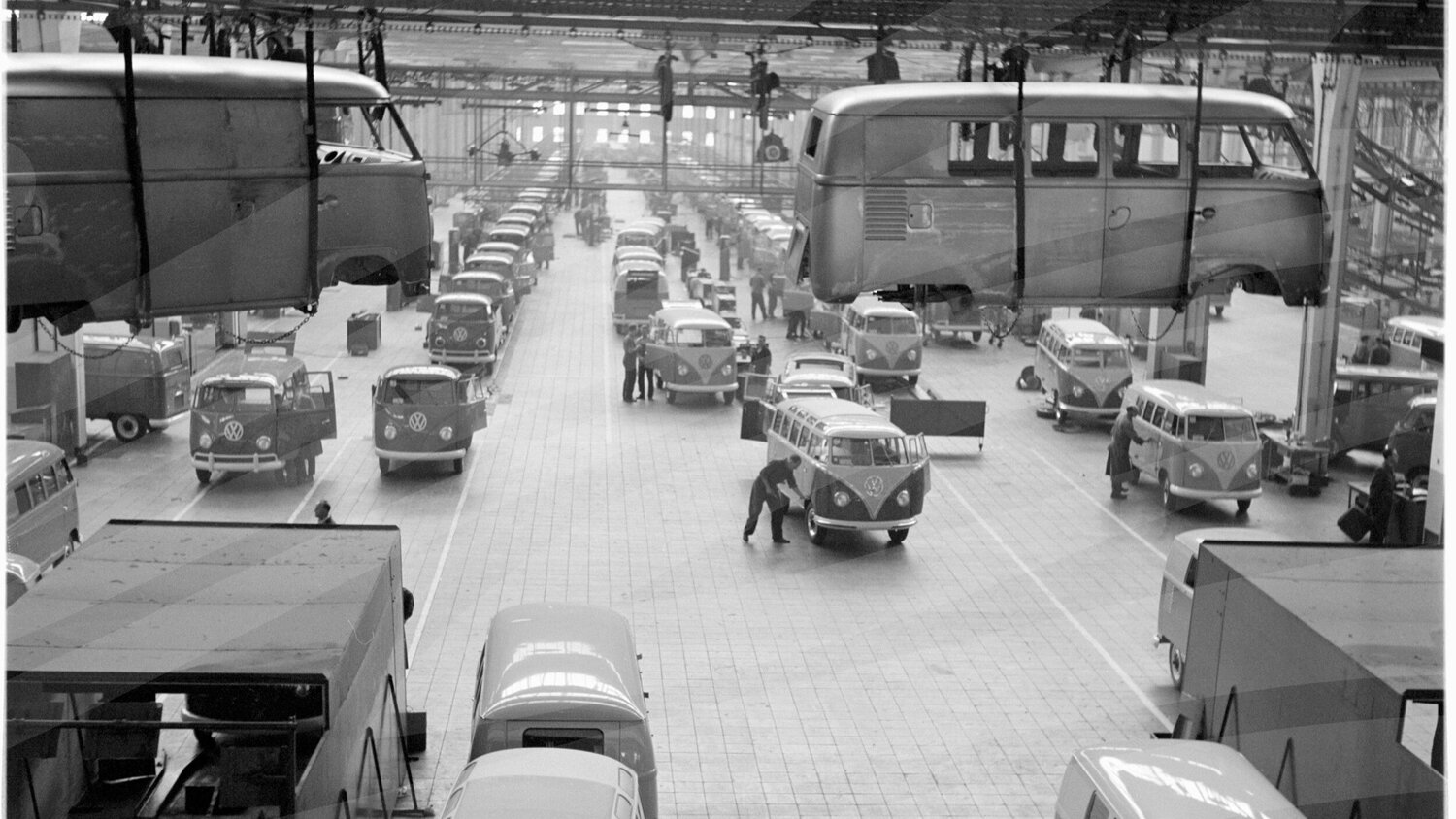
Meant to be a versatile vehicle, Type 2 was offered by Volkswagen in a variety of layouts, from the mostly windowless Panel Van and solid-colored Kombi to the two-toned Microbus and deluxe 21-windowed “Sondermodell,” all of which can be seen in this 1959 photograph.
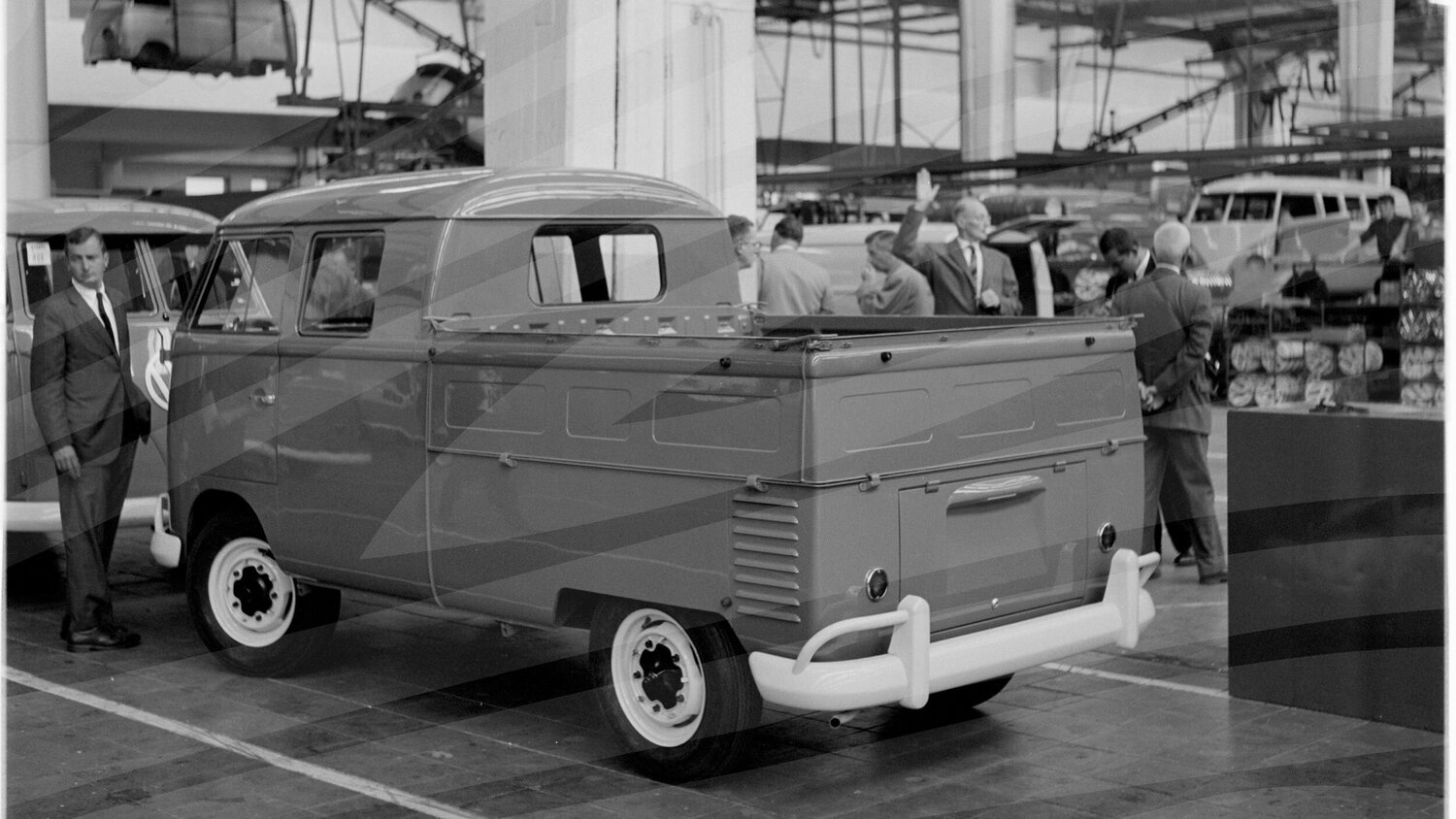
The down-to-business Panel Van, true to Pon’s original concept, was originally marketed as a commercial vehicle and was oriented towards cargo hauling. If that wasn’t sufficient for one’s commercial needs, Volkswagen offered a pickup truck version of its Microbus, seen here on the factory floor, which outfitted the Transporter with a flatbed that had lockable storage underneath.
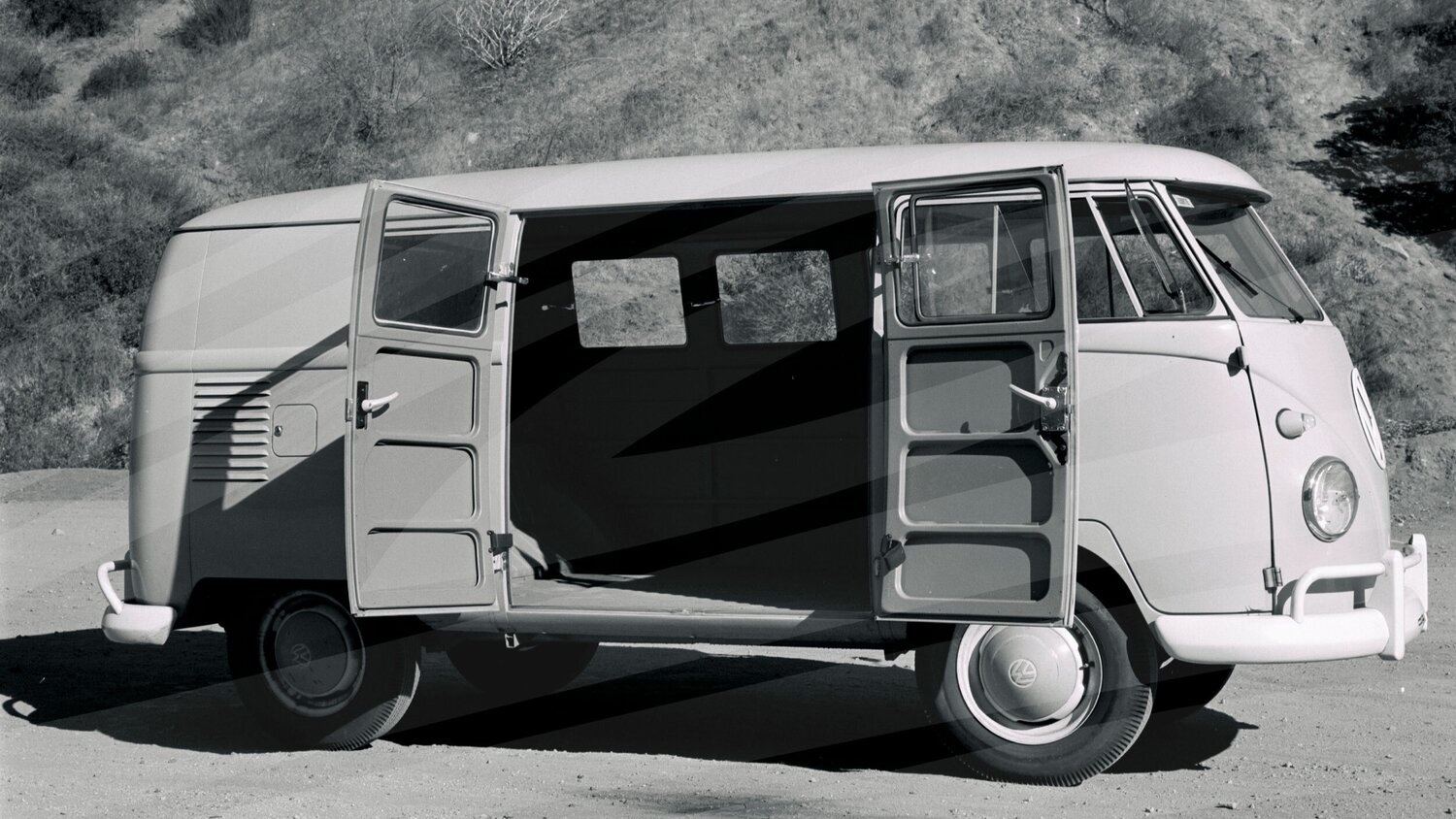
The Kombi, short for “kombination,” had a more flexible layout that could be utilized for cargo or passenger transport, but was still, at first, only offered in one color, the denim-like “Dove Blue.” With the Microbus, a better-trimmed version of the Kombi introduced in the Summer of 1951, the Transporter went from being a strictly utilitarian vehicle to one that was more like an “oversize passenger car” ideal for touring the countryside.
Interestingly, this variety meant that Type 2 was promoted as both a utilitarian cargo-hauler and as a somewhat luxurious passenger touring vehicle. Promoting the luxurious touring image, Volkswagen released the special Deluxe Sondermodell, also known as the “Samba” model, shortly after the Microbus. With over twenty windows and retractable cloth top, Volkswagen advertisements promoted that this deluxe Microbus could even be used to tour the Alps.
It was perhaps, this mountain-going affinity that inspired the Motor Trend crew to put Type 2 to the test in 1959, subjecting it to “some of the roughest terrain and driving procedures we have ever asked any MT test vehicle to undergo.” Despite the somewhat precarious look of the photos above, the results of these tests, published in the magazine’s January 1959 issue, were “revealing and positive.”
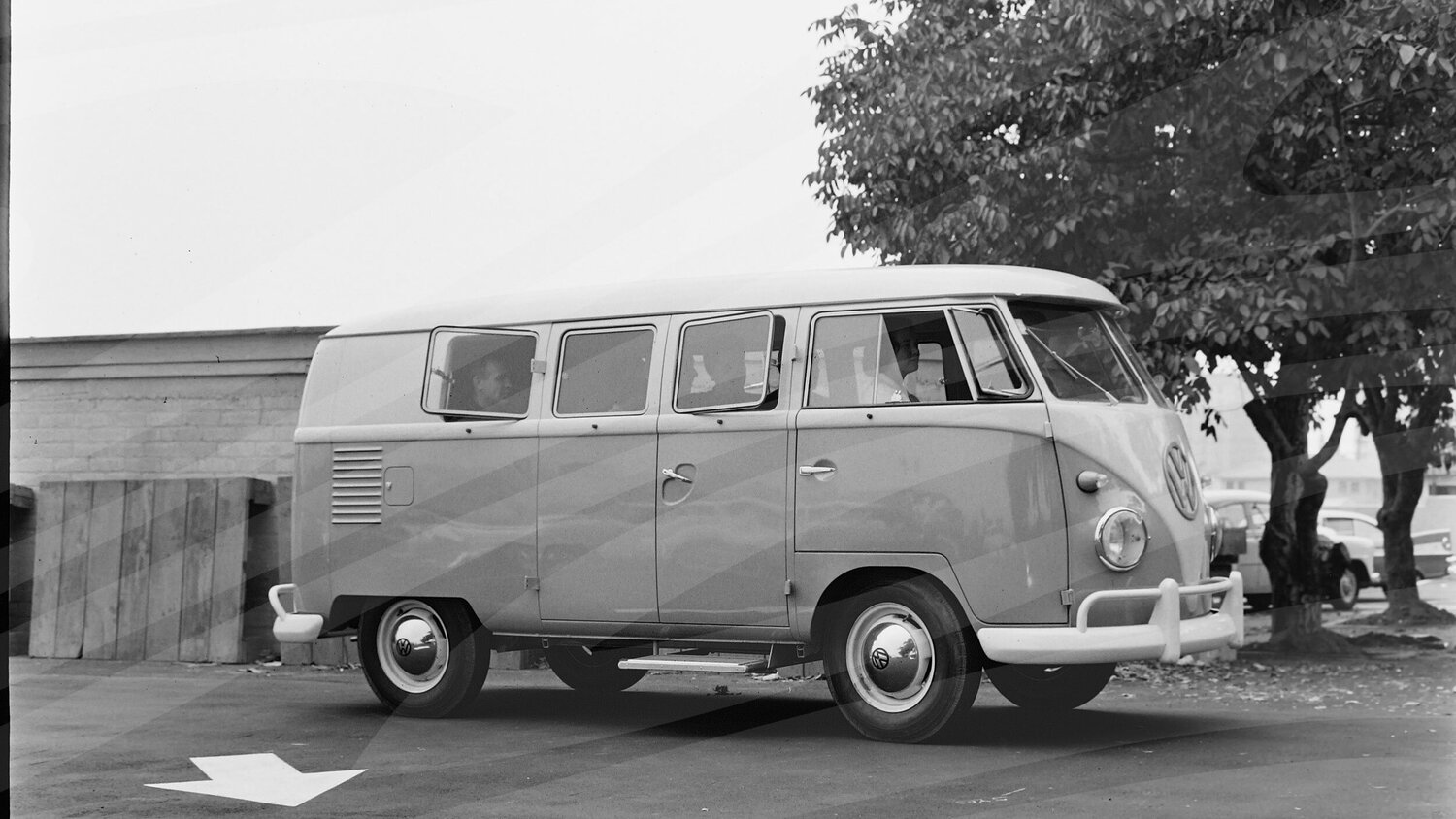
The same could not be said, at least at first, of the appearance of the boxy bus on American roads. Wayne Thom’s first impression of it echoed a sentiment that would draw many to the Transporter in later years, “Ugly?” Thoms questioned, “you could hardly call it handsome.” There was, however, “a certain charm” to the bus “which is something like an acquired taste—it grows on you.”
If Volkswagen’s foreign look was difficult to describe, its features proved equally elusive, meriting comparison to a number of different vehicles.
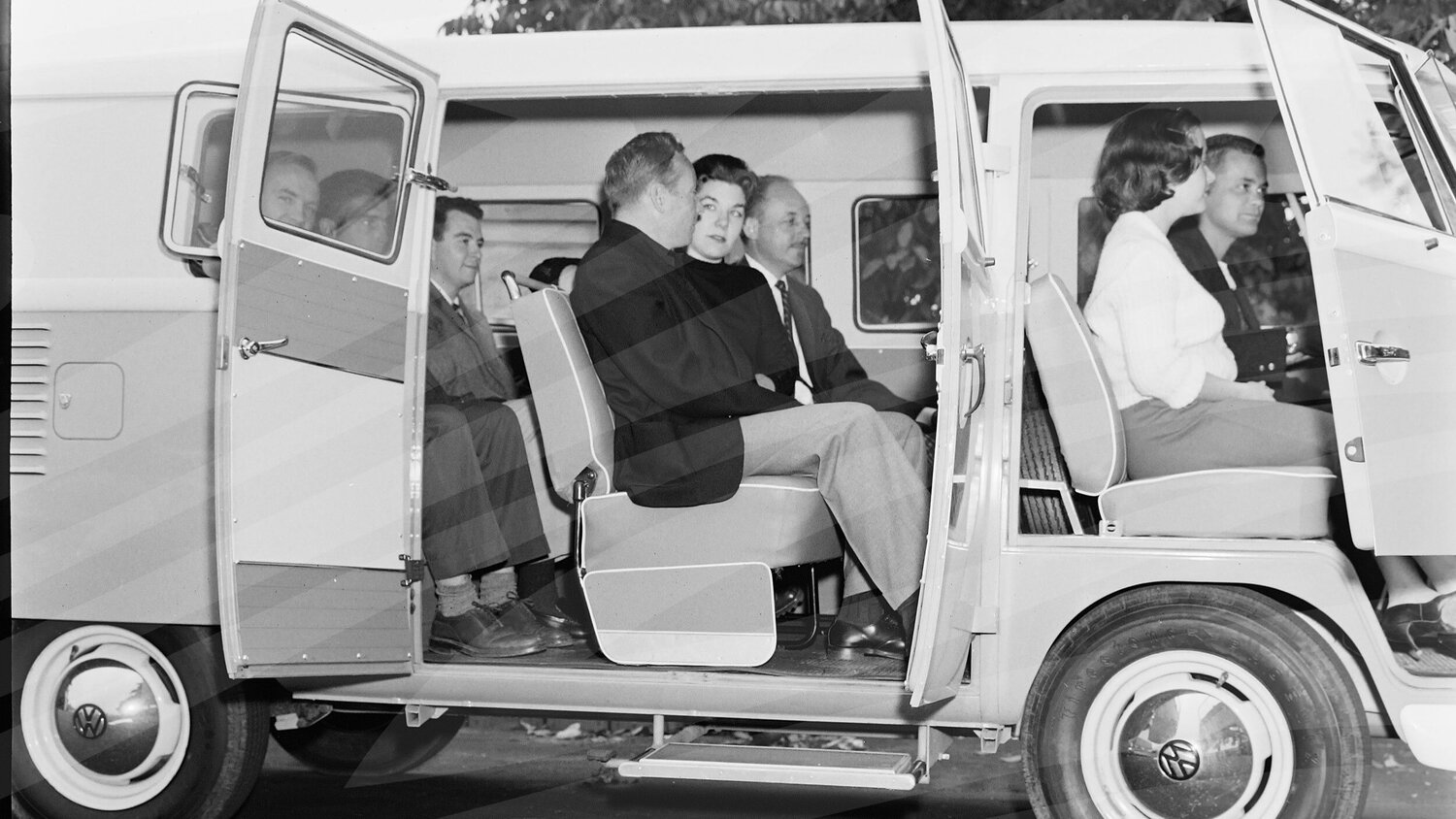
The carrying capacity? “Roughly the same as a half-ton pickup” Motor Trend described. Space was one thing of which the Volkswagen had plenty. Here, “graphic evidence” of this fact proved that the car could carry eight people…even if each brought along two suitcases.
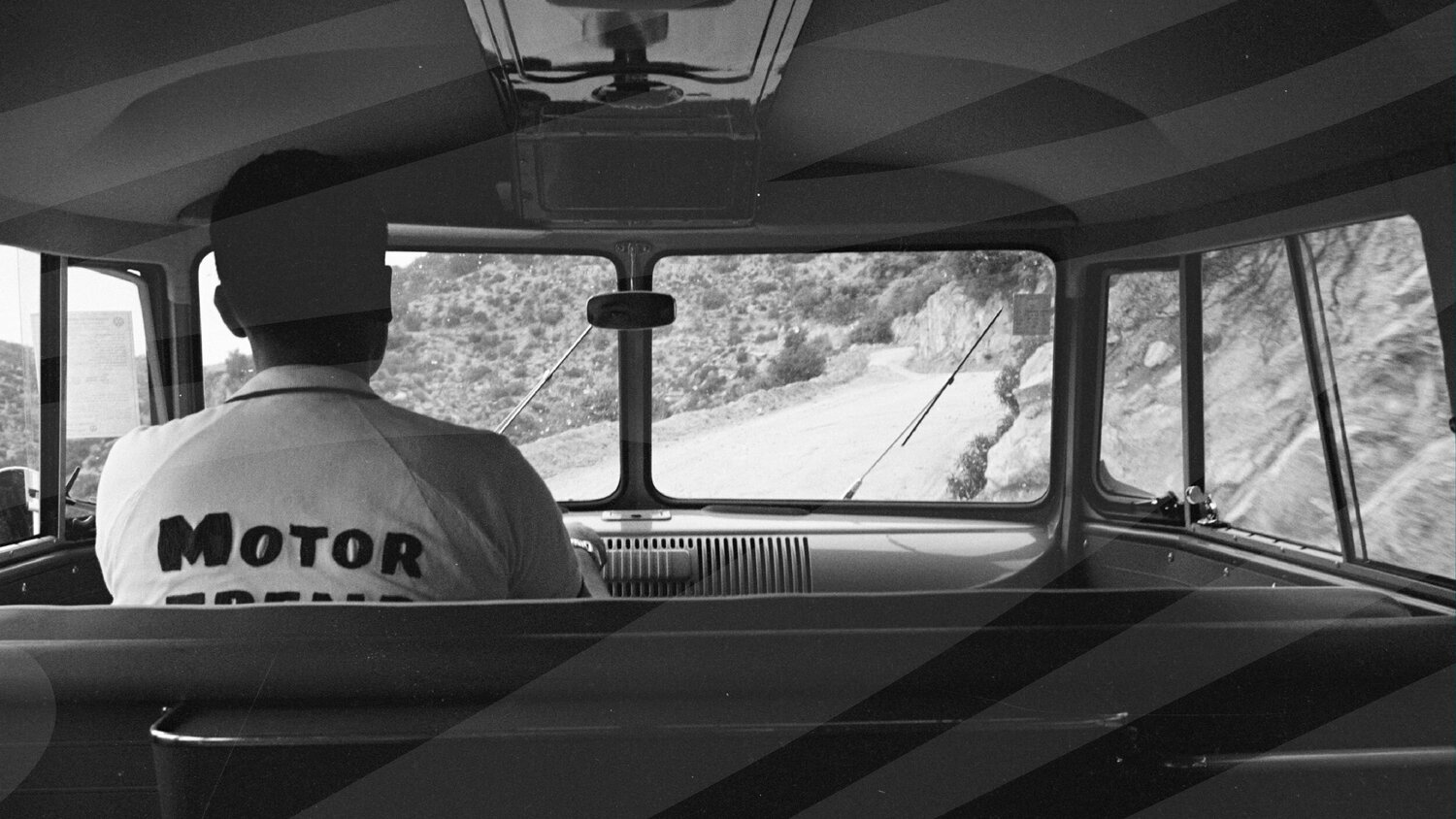
And the view for the driver and passengers? The Transporter’s engine was in the back, just as it was in the Beetle and Plattenwagen, which meant that Volkswagen designers could place the driver’s cabin at the front of the vehicle, with little overhang, and little to obscure the view of the surrounding countryside. Combined with the van’s large front and side windows, this configuration gave the Type 2 “visibility second only to a Greyhound bus.”
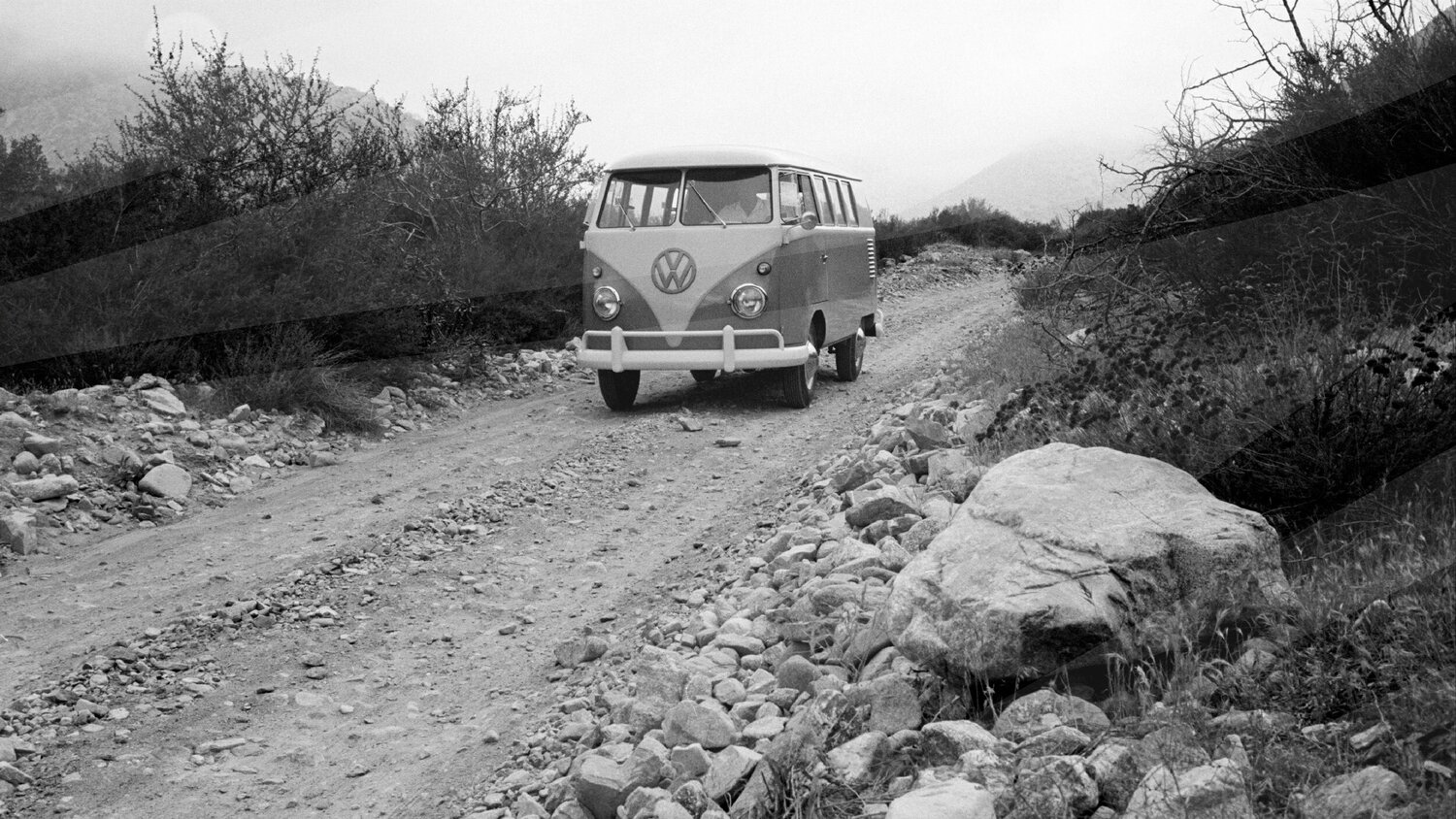
Visibility was good because it would seem that as a passenger you would have plenty of time to notice the details in the landscape. With a top speed of “a casual 50 mph” Motor Trend conceded that the Transporter “can be considered too slow for most open highways.” With the Type 2’s propensity for top-heaviness, however, Thoms admitted that its slow speed was a “huge built-in safety factor.”
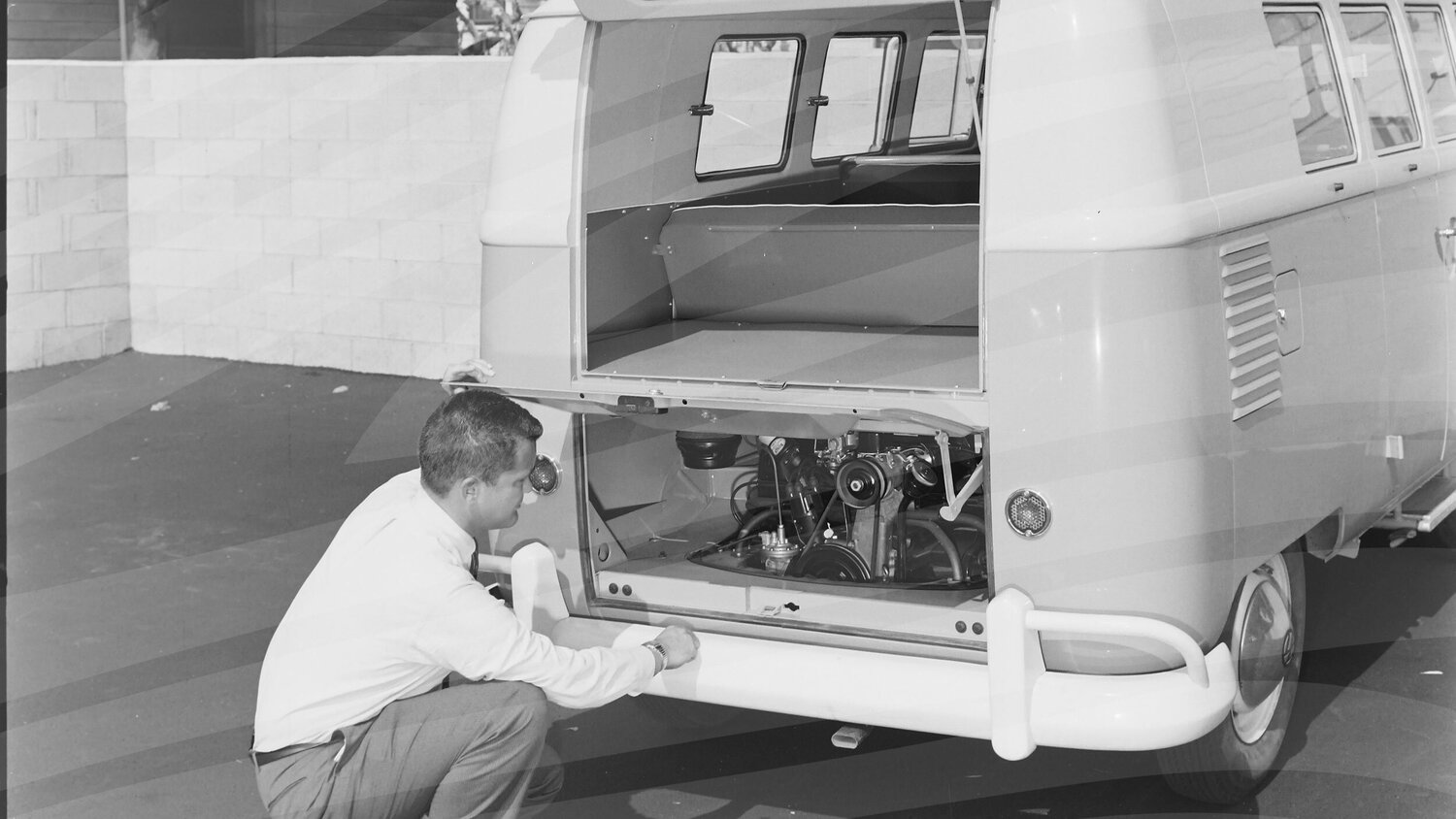
Perhaps making up for its lack of power, the 1959 Transporter’s 36 horsepower engine was easy to service. “Repairs and maintenance are among the cheapest in the import field,” Motor Trend assessed, and “considerably below more complex domestic cars.” The engine’s small size meant that its fuel-consumption was also considerably lower than domestic cars. The Motor Trend test pegged the Transporter’s gas mileage at a respectable 20.3 to 22.3 mpg.

Volkswagen was also considerably easy to operate. Its “choke, fuel reserved and heater knob,” as Motor Trend described, “are centered below seat within easy reach of the driver.”
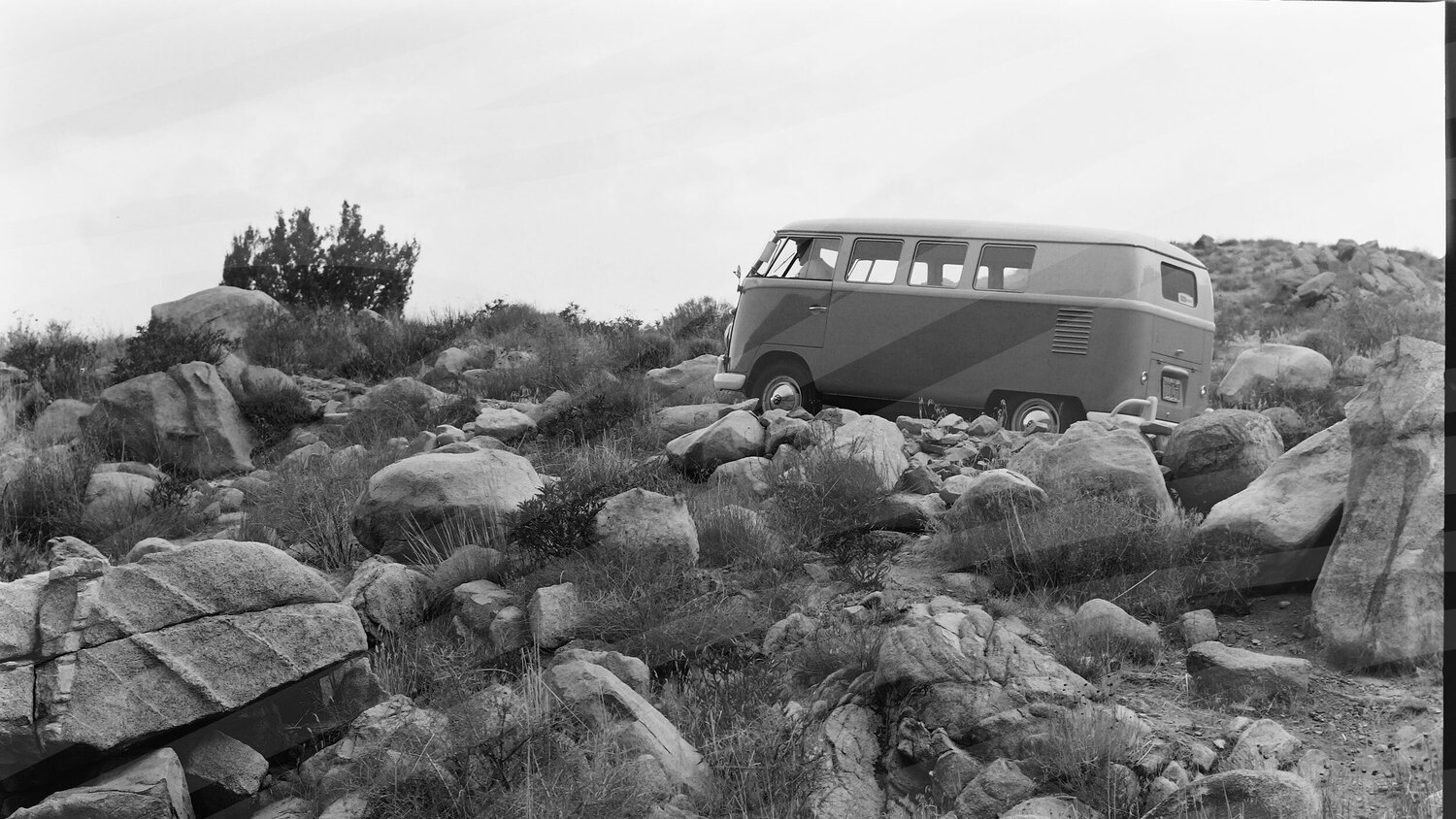
All in all, despite the Transporter’s “uncommon” appearance, relatively slow top speed, and uncanny propensity for tipping, Motor Trend concluded if a driver, and their passengers, had “the courage to press on,” then “there isn’t much in the way of uncharted terrain that will stop a Microbus.”

Indeed, after making an appearance in this road test, the German-built Transporter would go on to become an icon of American culture. The “hippie bus,” often featured colorful hand-painted murals, utilized the large creative space afforded by the Transporter’s relatively plain slab-sided design. The ubiquitous bus became a staple among surfers in the 1960s and 1970s, for many of the same reasons that Motor Trend recommended it, namely, its low cost and ease of maintenance. Its large size additionally made it ideal for transporting the long surfboards popular at the time. But even in 1959, ten years before Woodstock and just as the surfing wave was beginning to crest, one could certainly agree that “the car must be something special.”
Report by Kristin Feay for petersen.org










